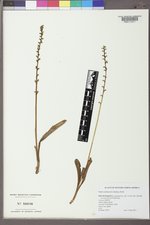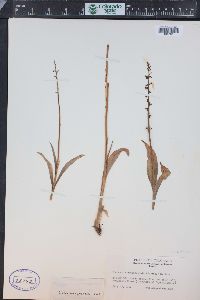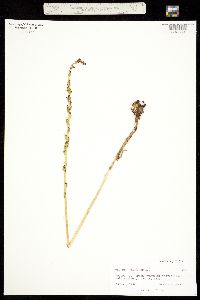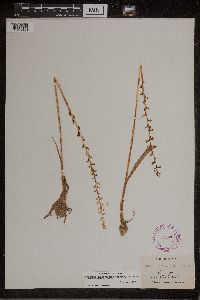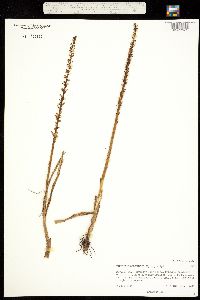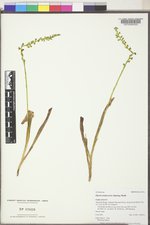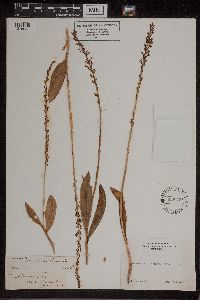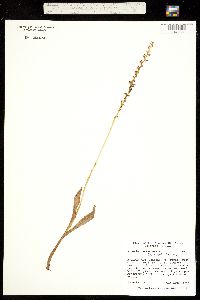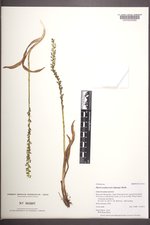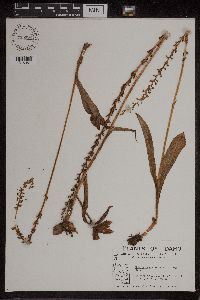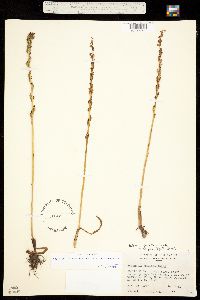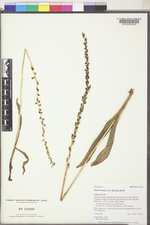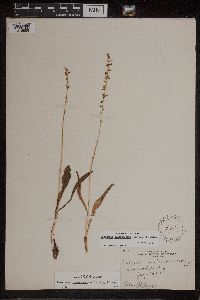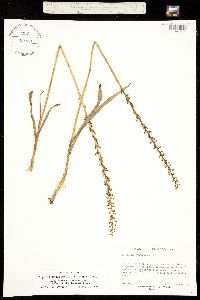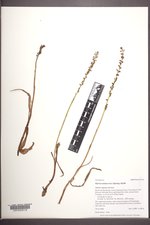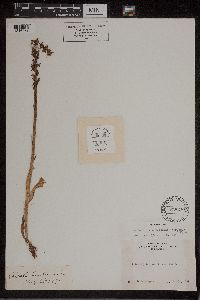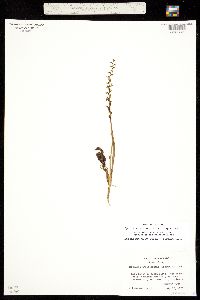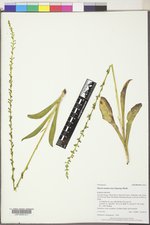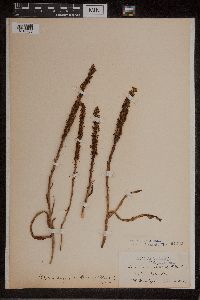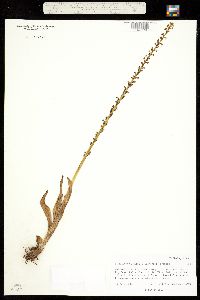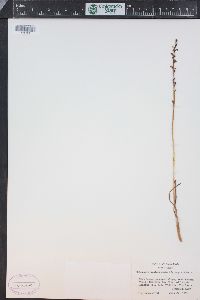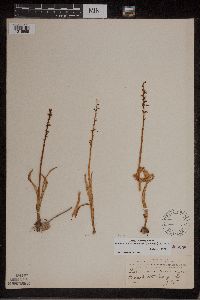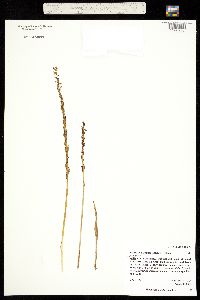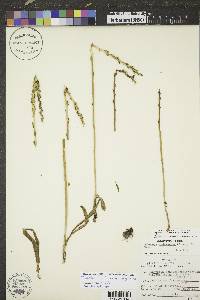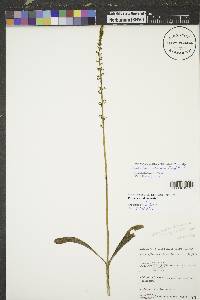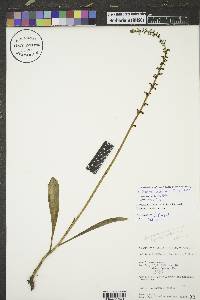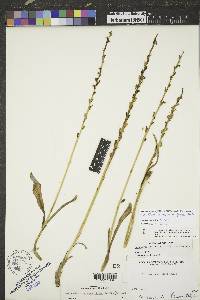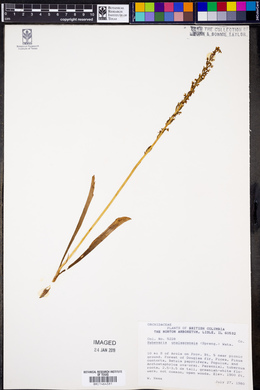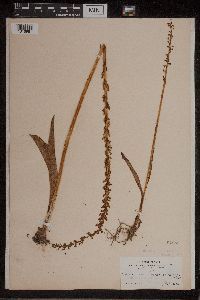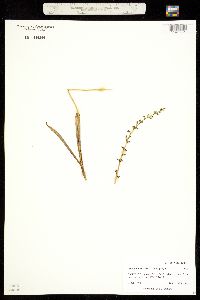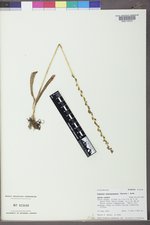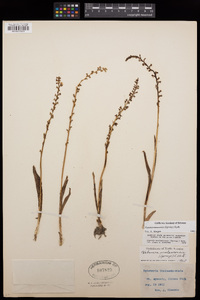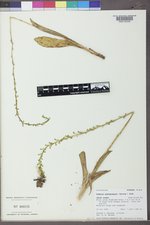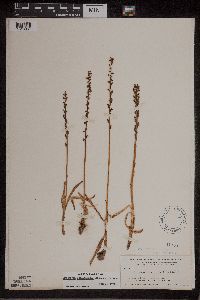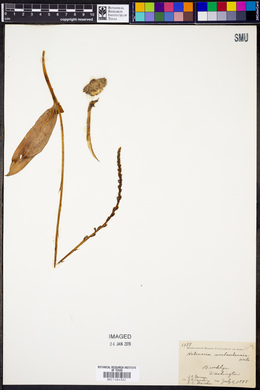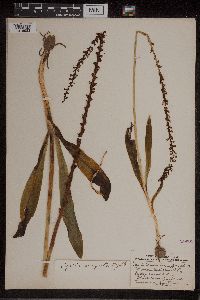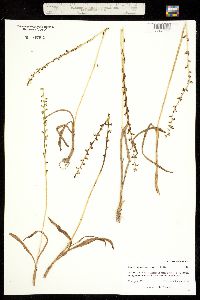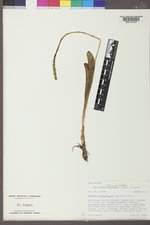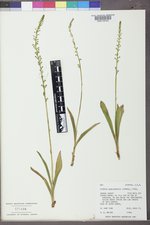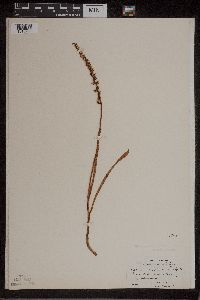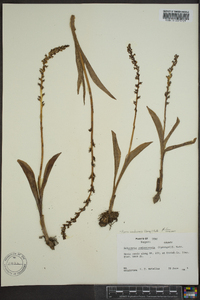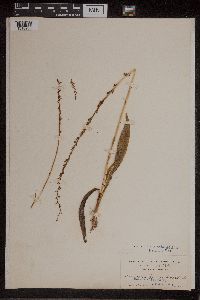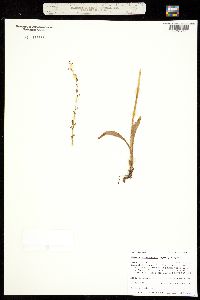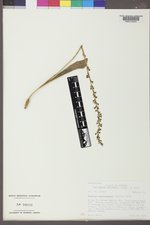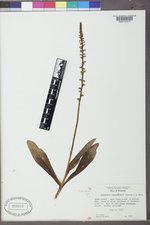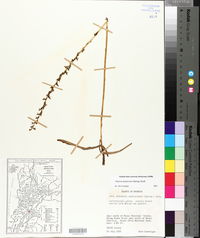Piperia unalascensis
|
|
|
|
Family: Orchidaceae
Alaska Rein Orchid, more...Santa Catalina Island Rein Orchid
[Habenaria unalascensis (Spreng.) S. Watson, moreHabenaria unalascensis subsp. elata (Jeps.) Calder, Habenaria unalascensis var. elata (Jeps.) Correll, Habenaria unalascensis var. unalascensis , Platanthera cooperi (S.Watson) R.M.Bateman, Platanthera unalascensis (K.P.J.Sprengel) F.Kurtz, Platanthera unalascensis subsp. elata (Jeps.) Roy L. Taylor & MacBryde, Platanthera unalascensis subsp. maritima (Greene) de Filipps, Platanthera unalascensis var. maritima (Greene) Correll, Spiranthes unalascensis Spreng.] |
Plants 9-70 cm. Stems swollen to uniform diameter toward base, 0.7-6.1 mm diam. distal to leaves; bracts 1-8. Leaves prostrate; blade 5-16(-20) × 1.3-3.5 cm. Inflorescences usually sparsely flowered, 3-44 cm; rachis usually longer than peduncle; bracts 3-23 mm. Flowers ± translucent green, fragrance nocturnal but lingering during day, musky or soapy, sometimes honeylike; sepals ± translucent, 2-4.2 × 1-2.6 mm; dorsal sepal ovate to oblong; lateral sepals spreading to strongly recurved; petals usually projecting to erect, ± straight-sided, asymmetrically ovate to linear-lanceolate, 2-5.5 × 0.6-2 mm; lip ± deflexed, broadly ovate to lanceolate-elliptic, 2-5 × 1-3 mm, apex usually somewhat upcurved; spur horizontal to decurved, 2-5.5 mm, ± equal to lip; viscidia broadly elliptic-ovate, 0.15-0.5 × 0.1-0.3 mm; rostellum blunt. Capsules 3.5-10.5 mm. Seeds tan to cinnamon brown. Flowering Jun--Aug; Apr--May, lowlands of n Calif. Coniferous and mixed evergreen forests, generally dry sites, rarely coastal bluffs; 0--3000 m; Alta., B.C., Nfld. and Labr. (Nfld.), Ont., Que.; Alaska, Calif., Colo., Idaho, Mich., Mont., Nev., N.Mex., Oreg., S.Dak., Utah, Wash., Wyo. The racemes in Piperia unalascensis are usually slender and sparsely flowered; racemes of uncommon coastal populations (including the type) are short, stout, and densely flowered. Plants of the coast ranges and the Pacific Northwest are stouter and have broader sepals and petals than do interior and montane forms. Two sym-patric forms appear to be in the Sierra Nevada, differing in lip morphology and scent.
Scapose, 3-5 dm from a pair of tuberous roots, with 1 or 2 sheathing bracts below the 2 or 3(4) ascending, nearly basal lvs, these narrowly lanceolate to broadly oblanceolate, 8-12 cm, acute to rounded, beginning to wither by early anthesis; scape with scattered small bracts; infl 10-30 cm; fls numerous, small, sessile or nearly so, greenish; lip narrowly lanceolate to triangular-ovate, 2.5-4 mm; sep and lateral pet 2-4 mm; spur cylindric to clavellate, 3-5 mm; pollen-sacs adjacent, each with a deeply bifid pollinium, the viscidia close together in the roof of the orifice to the spur. Thin soil of clearings and open woods; cordilleran, disjunct to the e. part of the Upper Peninsula of Mich. and the n. shore of Lake Huron and to Anticosti I. June-Aug. (Piperia u.) Gleason, Henry A. & Cronquist, Arthur J. 1991. Manual of vascular plants of northeastern United States and adjacent Canada. lxxv + 910 pp. ©The New York Botanical Garden. All rights reserved. Used by permission. |


